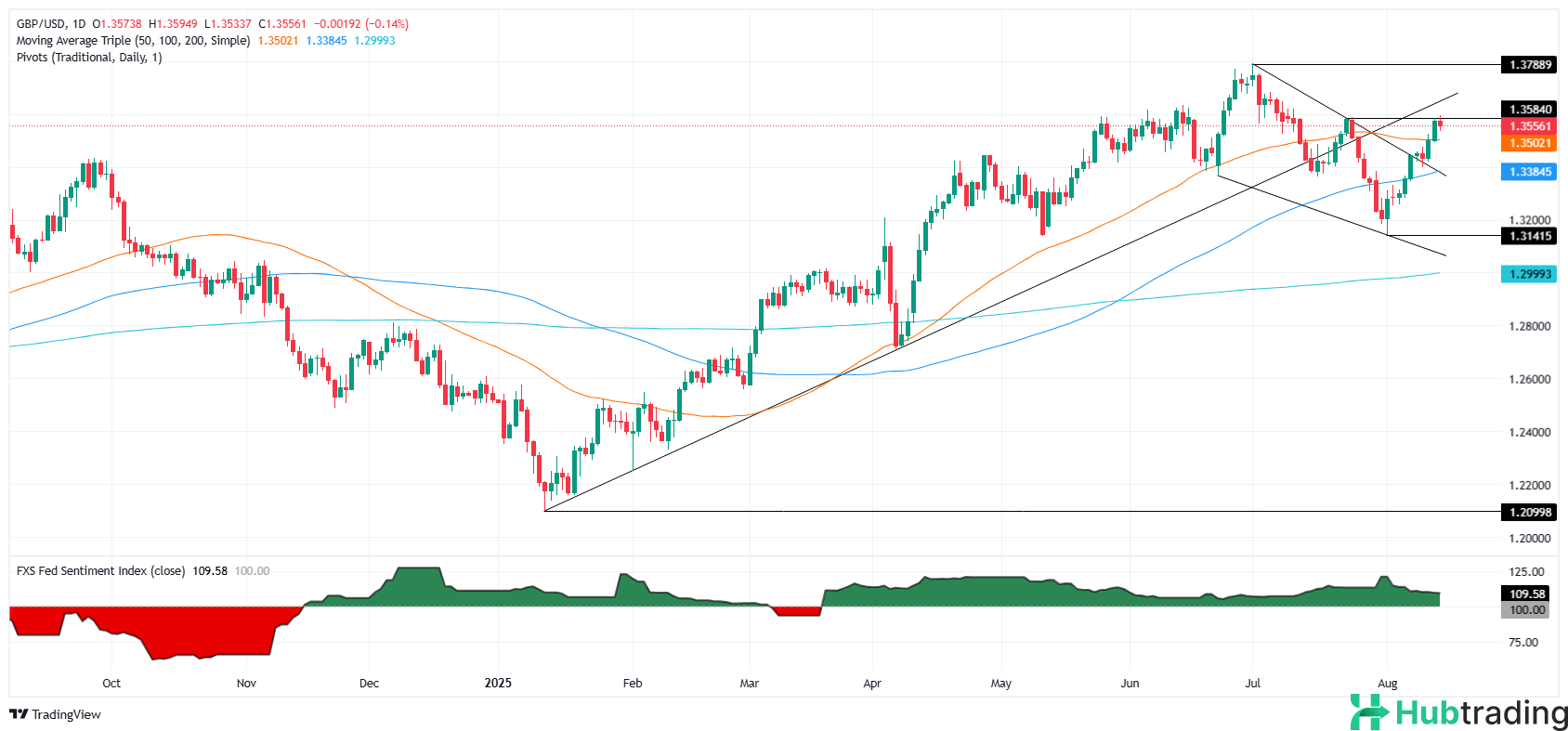-
GBP/USD slips 0.21% to 1.3545 as US PPI jumps 0.9% MoM and 3.3% YoY in July, with Core PPI climbing to 3.7%, reinforcing inflation concerns.
-
US Jobless Claims came in stronger than expected at 224K, while Continuing Claims fell to 1.953 million, signaling labor market resilience.
-
Markets still price in a 25 bps Fed rate cut in September, but odds of a 50 bps move have faded, with some traders now betting on no change.
The British Pound (GBP) edged lower against the US Dollar (USD) during the North American session on Thursday, with GBP/USD down 0.21% to 1.3545, as stronger-than-expected US inflation and labor market data weighed on rate cut expectations for the Federal Reserve. Earlier in the session, the pair had touched a daily high of 1.3594 before retreating.
Hot US PPI data fuels Dollar strength
The US Producer Price Index (PPI) surged in July, rising 0.9% month-over-month (MoM) after a flat reading in June. On an annual basis, PPI accelerated to 3.3%, well above the 2.5% forecast and June’s 2.3% print. Core PPI, a key input for the Federal Reserve’s preferred inflation measure — the Personal Consumption Expenditures (PCE) Price Index — jumped to 3.7% YoY, up sharply from 2.6%.
These figures suggest that inflationary pressures remain sticky and that businesses are likely passing tariff-related costs onto consumers. The data reinforced the Greenback’s rebound, especially when paired with a better-than-expected labor market report.
Initial Jobless Claims for the week ending August 9 fell to 224,000, beating the 228,000 forecast and improving from the previous 226,000. Continuing Claims also declined slightly to 1.953 million from 1.964 million, suggesting ongoing resilience in the US job market.
Despite the strong inflation and jobs data, markets are still pricing in a 25 basis point rate cut at the Federal Reserve’s September meeting. However, expectations for a larger 50 bps cut have been erased, and some investors are now leaning toward the possibility of no change in rates.
This shift in sentiment has strengthened the US Dollar, pressuring GBP/USD after several days of modest gains.
In the UK, second-quarter GDP data released earlier this week showed that the economy grew by 0.3% quarter-over-quarter, above the 0.1% forecast but down from 0.7% in Q1. While the better-than-expected performance offered some support for the Pound, concerns persist over a possible stagflation scenario given the combination of sluggish growth, persistent inflation, and a softening labor market.
As a result, the Bank of England is widely expected to keep its policy rate unchanged at 4.25% during the September meeting.
Market participants now turn their attention to upcoming US economic releases, including Retail Sales and the University of Michigan Consumer Sentiment Index, which may provide further clues about the strength of the US economy and the Fed's policy path. On the UK side, traders are awaiting the August 20 release of CPI data for June, which could be key for shaping BoE expectations moving forward.
GBP/USD technical outlook

GBP/USD has pared back some of its weekly gains but continues to hold above the 20-day Simple Moving Average (SMA), currently at 1.3498 — a level that may act as short-term support. Immediate resistance is seen at 1.3550, with the next upside target at 1.3600.
A break above 1.3600 could pave the way for a test of the July 4 cycle high at 1.3681, just below the key 1.3700 psychological level. On the downside, a sustained move below 1.3498 would likely increase bearish pressure, potentially pushing the pair toward the 1.3450 area.





